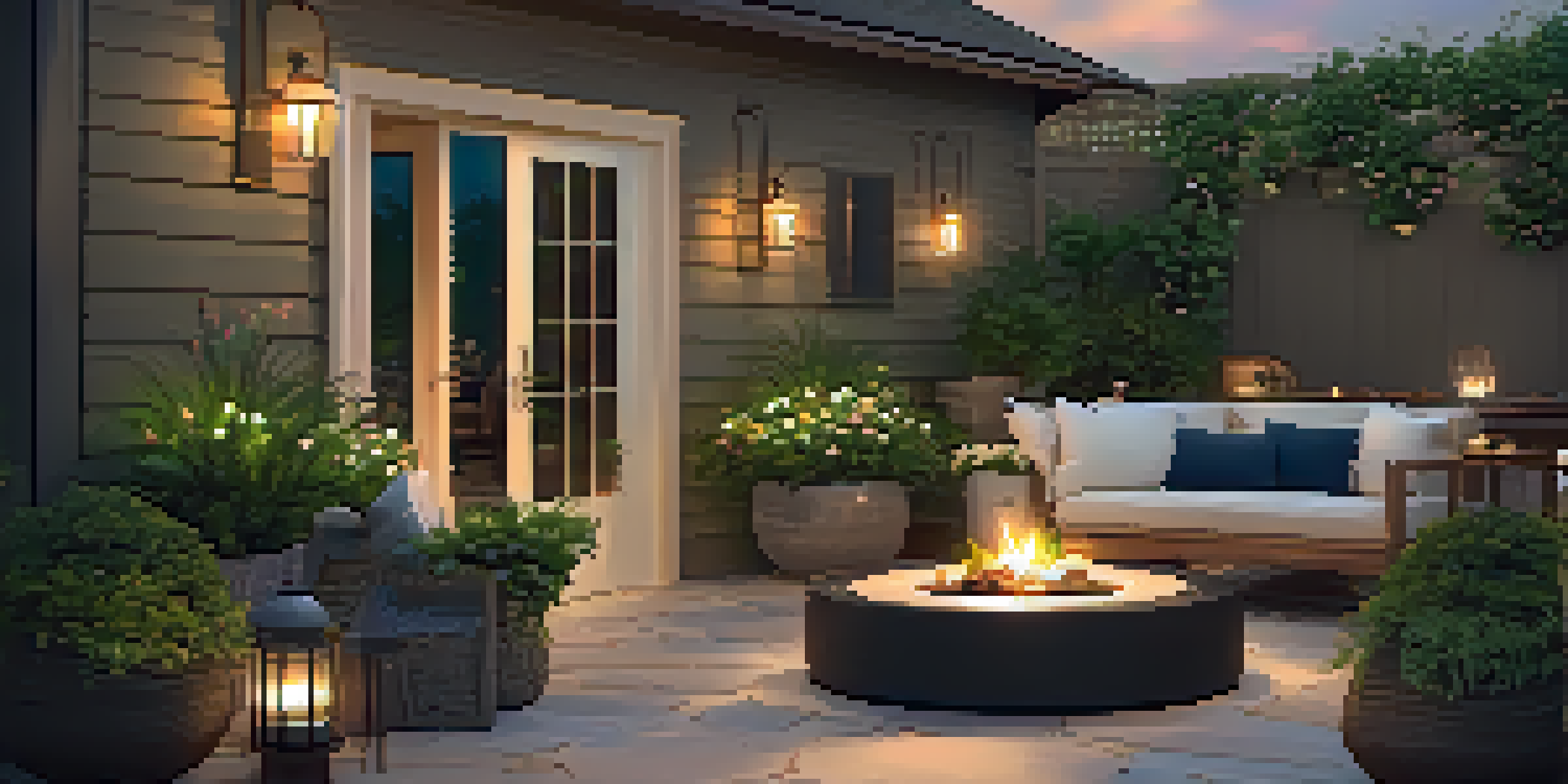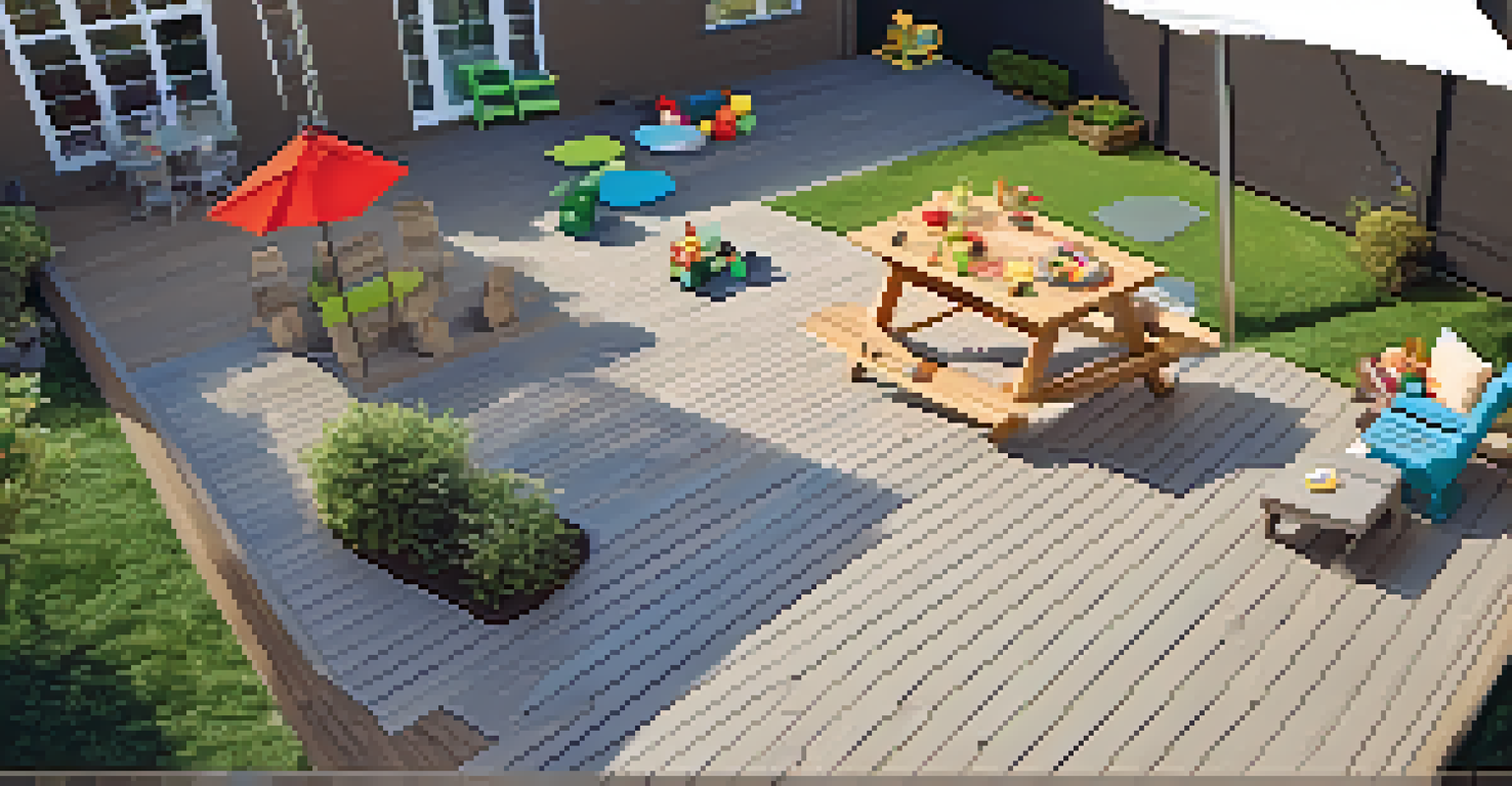Choosing the Right Flooring for Outdoor Spaces

Understanding Your Outdoor Space Needs
When it comes to outdoor flooring, the first step is to assess your space. Consider factors like the size, shape, and purpose of the area. Is it for entertaining, relaxing, or perhaps for kids to play?
Outdoor spaces are a reflection of our lifestyles and personalities.
Each outdoor space has unique requirements, so think about how you plan to use it. For instance, a patio designed for family gatherings will need different flooring than a garden path.
By understanding your needs, you can narrow down your options and find a flooring solution that not only looks great but also fits seamlessly into your lifestyle.
Exploring Different Outdoor Flooring Materials
There are various materials available for outdoor flooring, each with its own pros and cons. Popular choices include wood, composite decking, pavers, and natural stone. Each material offers different aesthetics and levels of durability.

For instance, wood provides a warm, classic look but may require regular maintenance to prevent weathering. On the other hand, composite decking is low maintenance and resistant to rot, making it a practical choice for many homeowners.
Assess Your Outdoor Space Needs
Understanding the purpose and unique requirements of your outdoor area is crucial for selecting the right flooring.
Understanding the different materials will help you make an informed decision based on your needs, budget, and the outdoor ambiance you wish to create.
Considering Climate and Weather Conditions
Your local climate plays a significant role in choosing outdoor flooring. If you live in a region with heavy rainfall, for example, you'll want a material that can withstand moisture without warping or cracking.
The details are not the details. They make the design.
Conversely, areas with extreme heat might require flooring that doesn't become unbearably hot underfoot or fade in the sun. Some materials, like concrete, can be treated to stay cooler.
By factoring in the climate, you can select flooring that not only looks good but also lasts through the seasons.
Evaluating Installation and Maintenance Requirements
Before settling on a flooring option, consider the installation process. Some materials, like pavers, can be a DIY project, while others may require professional help. Understanding what’s involved will help you better plan your budget and timeline.
Maintenance is another key consideration. For example, natural stone may need sealing to prevent stains, while composite materials typically only require a good wash occasionally.
Consider Climate and Maintenance
Choosing flooring based on local climate and maintenance needs ensures durability and long-lasting appeal.
By evaluating both installation and maintenance, you can choose a flooring type that ensures long-term satisfaction without unexpected hassles.
Budgeting for Your Outdoor Flooring Project
Budgeting is crucial when selecting outdoor flooring. Costs can vary significantly based on material, installation, and any additional features like sealing or finishing. It's essential to get a clear estimate of total expenses.
Consider not just the initial costs, but also long-term maintenance expenses. A cheaper material may save you money upfront but could require more frequent repairs or replacement.
By setting a realistic budget that includes all potential costs, you can choose flooring that meets your needs without breaking the bank.
Incorporating Style and Design Aesthetics
When choosing outdoor flooring, think about how it complements your home’s overall style. Your flooring should harmonize with your house’s architecture and the surrounding landscape.
For instance, a modern home might benefit from sleek concrete or stylish tiles, while a rustic cabin could look great with natural wood or stone. Consider colors, textures, and patterns to create a cohesive look.
Prioritize Safety and Comfort
Selecting slip-resistant and comfortable materials enhances the safety and enjoyment of your outdoor space.
By integrating style into your flooring choice, you enhance the visual appeal of your outdoor space, making it more inviting for you and your guests.
Ensuring Safety and Comfort Underfoot
Safety should be a top priority when selecting outdoor flooring. Look for materials that provide good traction and are slip-resistant, especially in wet conditions. This is particularly important if you have children or elderly family members.
Comfort is equally vital; you want a surface that feels good underfoot, especially during hot summer days. Some materials, like composite decking, remain cooler than others.

By prioritizing safety and comfort, you can enjoy your outdoor space without worry, making it a perfect spot for relaxation and fun.
Final Thoughts on Outdoor Flooring Choices
Choosing the right flooring for your outdoor space may seem daunting, but with careful consideration, it can be a rewarding process. Reflect on your needs, preferences, and the unique characteristics of your outdoor area.
Take the time to explore different materials and their benefits, and don't hesitate to consult professionals if you're unsure. They can provide valuable insights that align with your vision and budget.
Ultimately, the right flooring will enhance your outdoor space, turning it into a beautiful and functional area that you and your family can enjoy for years to come.